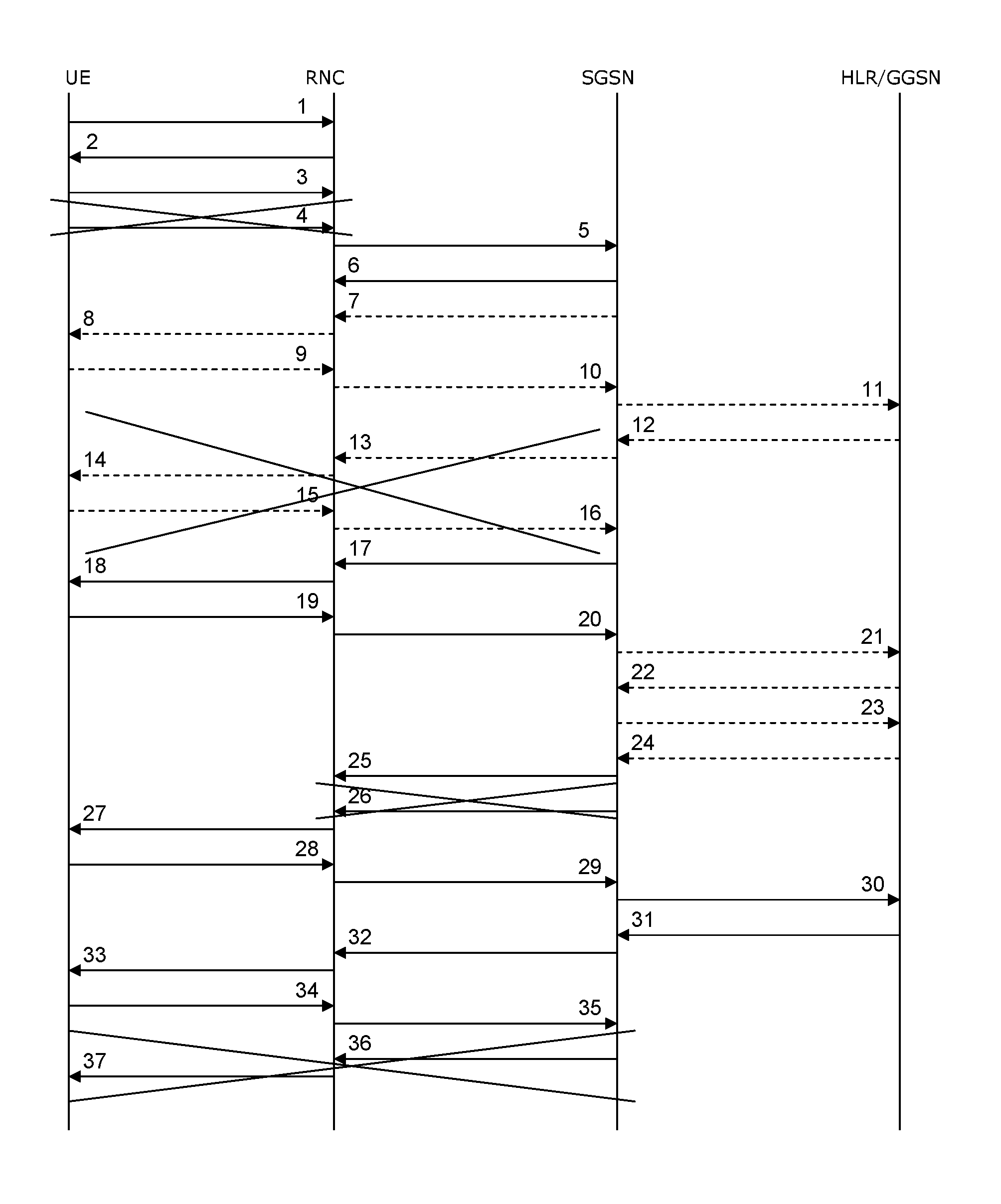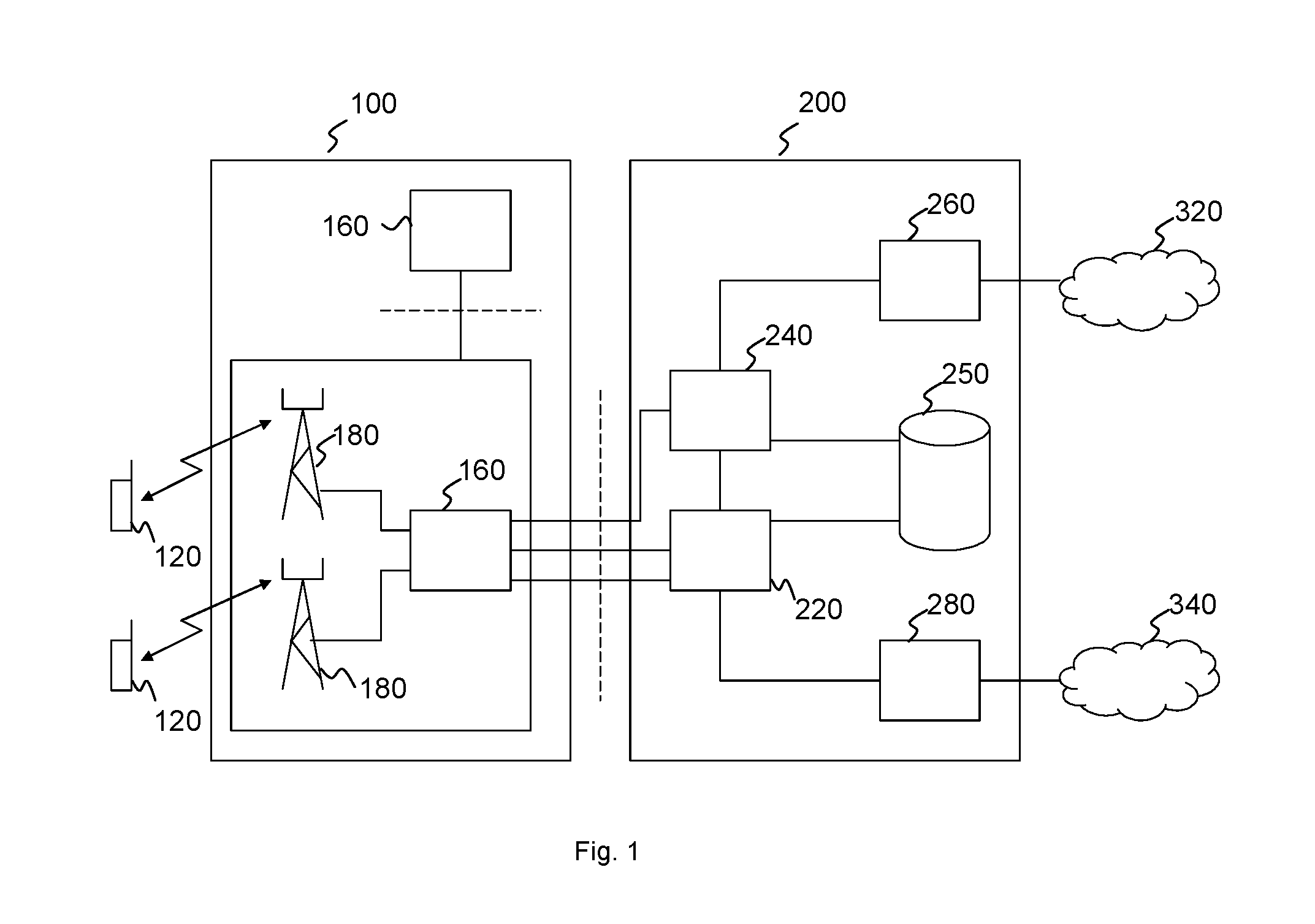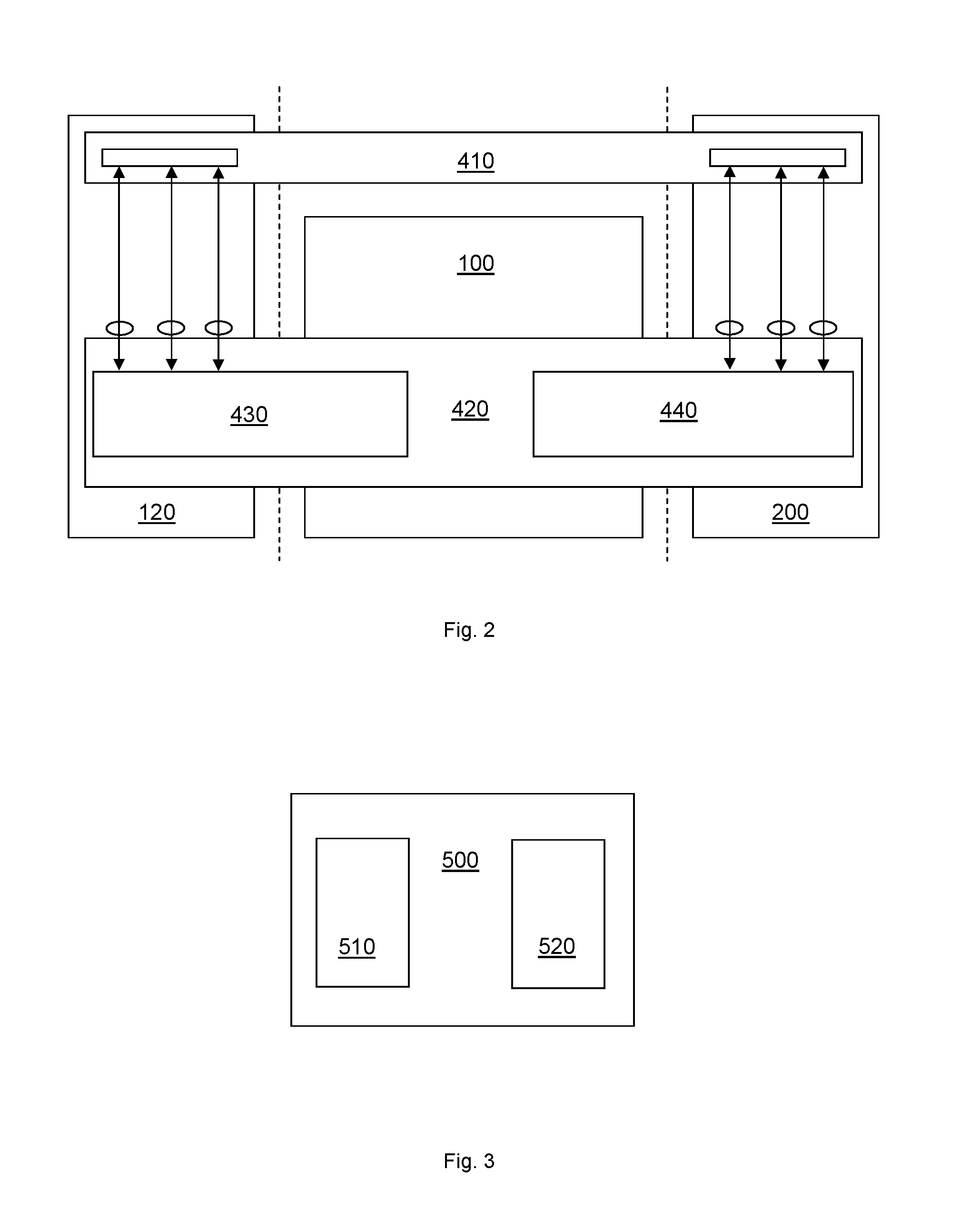Method And Arrangement For Reducing The Amount Of Messages Sent In A Communication Network
a communication network and message technology, applied in the field of communication network method and arrangement, can solve the problems of inability to efficiently coordinate as and nas procedures, significant delay in the execution of procedures, and almost entirely wasted bandwidth of reverse channels, so as to reduce the amount of messages sent
- Summary
- Abstract
- Description
- Claims
- Application Information
AI Technical Summary
Benefits of technology
Problems solved by technology
Method used
Image
Examples
Embodiment Construction
[0027]A block diagram of an exemplary 3GPP UMTS system network is shown in FIG. 1. The network comprises a radio access network (RAN), which in the preferred embodiment of the present invention is a UMTS Terrestrial Radio Access Network (UTRAN) 100 and a core network (CN) 200. The UTRAN 100 and the CN 200 provide communication and control for a plurality of user equipments (UE) 120.
[0028]The UTRAN architecture 100 comprises a plurality of Radio Network Controllers (RNC) 160 which is connected to a set of Node Bs 180. The Node Bs 180 comprise the antennas, RF equipment and baseband processing circuits needed to communicate with the UEs 120. The Node Bs 180 are connected to the RNC 160 through the Iub-interface.
[0029]The core network 200 typically comprises at least one Serving GPRS Support Node (SGSN) 220, one or more Gateway GPRS Support Node (GGSN) 280, at least one mobile switching center (MSC) 240, which may include a visitor location register (VLR) (not shown in FIG. 1), a Gatew...
PUM
 Login to View More
Login to View More Abstract
Description
Claims
Application Information
 Login to View More
Login to View More - R&D
- Intellectual Property
- Life Sciences
- Materials
- Tech Scout
- Unparalleled Data Quality
- Higher Quality Content
- 60% Fewer Hallucinations
Browse by: Latest US Patents, China's latest patents, Technical Efficacy Thesaurus, Application Domain, Technology Topic, Popular Technical Reports.
© 2025 PatSnap. All rights reserved.Legal|Privacy policy|Modern Slavery Act Transparency Statement|Sitemap|About US| Contact US: help@patsnap.com



